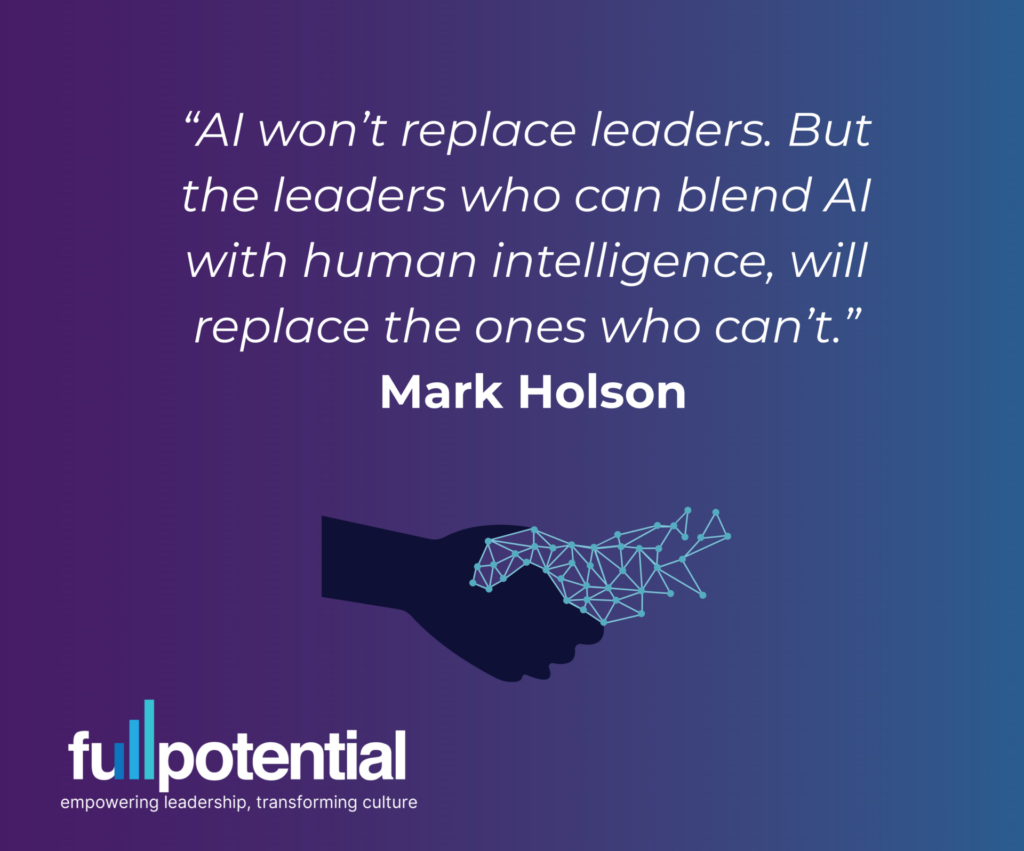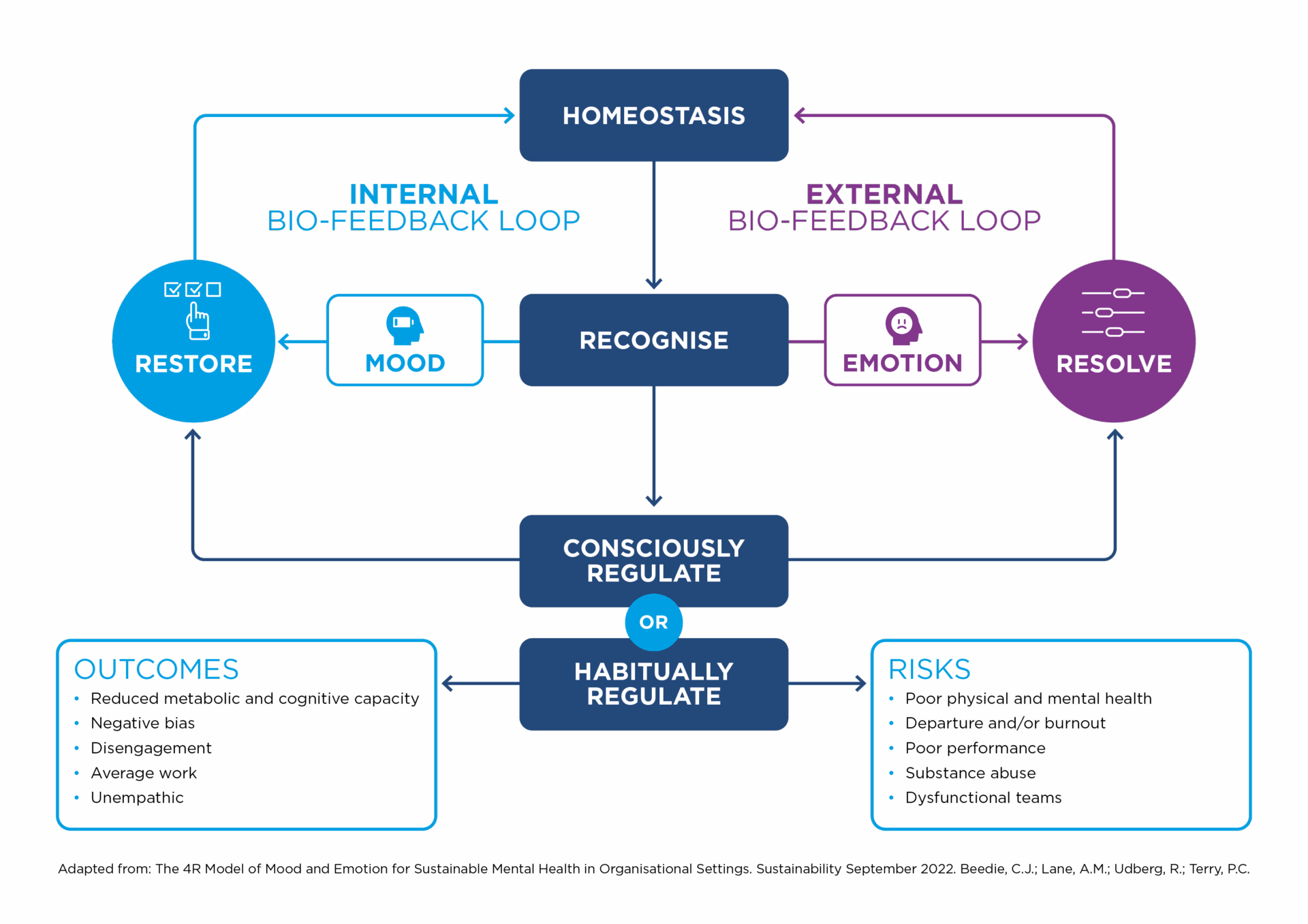AI won’t replace leaders. But the leaders who can blend AI with human intelligence, will replace the ones who can’t
There’s a shift happening in leadership. It’s not dramatic. It’s quiet. But it’s real.
More and more leaders are starting to use AI in their day-to-day work. Some are doing it openly. Some are doing it quietly. Some aren’t going near it at all.
There are those who are curious and having a go. Prompting tools on their phones. Drafting messages. Asking for help preparing team updates or finding the right words for something tricky. Then there are those who are staying away from it altogether, not because they’re stubborn, but because there’s a fear. That it’s not for them. That it will take something away. That it will expose what they don’t know.
And then there are the ones who are getting it right. These are the leaders who’ve figured out how to use AI as a support, not a substitute. They don’t sound like ChatGPT. They sound like themselves, just more prepared, more focused and with a bit more headspace.
This isn’t a future trend. It’s already happening. Which means we’ve got a choice to make about how we develop leaders going forward.
Bolt-on AI Development
Plenty of organisations are trying to figure out how to ‘do’ AI. And you can see the pattern emerging. AI gets its own course. Its own content. Its own tick-box in the LMS.
Well-meaning? Yes. Effective? Not really.
The issue isn’t that we’re not teaching leaders about AI. It’s that we’re keeping it completely separate from what leadership actually is.
If we’re serious about building AI capability in leaders, then we need to stop treating it like something technical and start treating it like something practical. It shouldn’t be bolted on. It should be built in.
The only way we make sure leaders use AI well is by making it part of how we help them develop human intelligence too. When AI sits on the side, we miss that chance. We want leaders who know how to use it with judgement, with care, with context.
And we don’t get that by adding an extra module.
We get that by embedding it into the work they’re already doing. Into the things they already care about doing well.
Build it into what already matters
Let’s say we’re helping a leader develop the confidence and ability to lead through change. That’s when AI should show up. Not in a session six months later. Right there and then.
AI can help them draft key messages, adjust tone, test different ways to frame a decision. Offer a structure when everything feels messy. It’s not leading for them. It’s helping them get clearer, quicker.
And the same goes for communication, coaching, performance conversations, all things that are already part of real leadership. AI can support preparation, simulate responses, act as a coach, reflect back tone. AI can give leaders a place to practise before taking action.
It doesn’t remove the need for trust or connection. It supports it.
And when you build AI into those moments, it doesn’t feel like something extra to learn. It feels like something useful to have.
The real risk is doing nothing
Let’s be honest. Shadow AI is already here. Leaders are figuring it out for themselves. Not always well.
They’re prompting in isolation. Writing things that don’t sound like them. Making decisions based on outputs they haven’t really thought through. Not because they don’t care. But because no one’s shown them how to do it any differently.
Someone told me the other week, “Every email I get from my boss sounds like it was written by AI.” That’s not impressive. That’s a miss. And when communication feels off, trust starts to slip.
None of this is inevitable. But it is avoidable. We just need to stop pretending this is something for later.
Because it’s not just about teaching AI. It’s about teaching leaders how to stay human while using it.
What good looks like
Used properly, AI can help leaders show up better. It can give them space to think. Time to prepare. A chance to reflect. It can help them do the admin faster, so they’ve got more time for the things that matter, time with their people, the conversations, the coaching, the check-ins.
And no, we’re not trying to turn leaders into tech pros. We’re just helping them keep up. Use the tools well. Lead in the world they’re already working in.
And like any shift, we’ve been here before. When the internet arrived, some leaders leaned in. Some sat it out. Eventually, knowing how to work online stopped being impressive and just became expected.
We’re now at that point with AI.
Soon, it will be unthinkable to hire a leader who doesn’t know how to use it. Not to automate their job, but to support it, to blend it. To make better use of their time, their thinking and their voice.
The leaders who can do that will be the ones we trust to lead the projects, the people and the conversations that matter most.
Three things to take away
-
Leaders are already using AI, but without development, they’re guessing. And that’s risky.
-
AI should never sit on the side. It should be part of how we help leaders build capability in the moments that matter.
-
The goal is not to make AI sound human. It’s to help leaders stay human while using AI.
And if you’re wondering whether AI wrote this blog…
It helped. But only after a good, honest conversation, filled with real thoughts and one strong belief.
Leadership is still human work.
Let’s keep developing it that way.
Introducing Our AI-Generated Podcast:
We’ve put these insights into action by using AI technology to create a podcast episode based on this blog post. This innovative approach demonstrates practically how AI can save time, extend reach, and offer information in varied formats to suit diverse preferences. Listen and experience first-hand how we blended AI capabilities with our human expertise.
Audio Player






